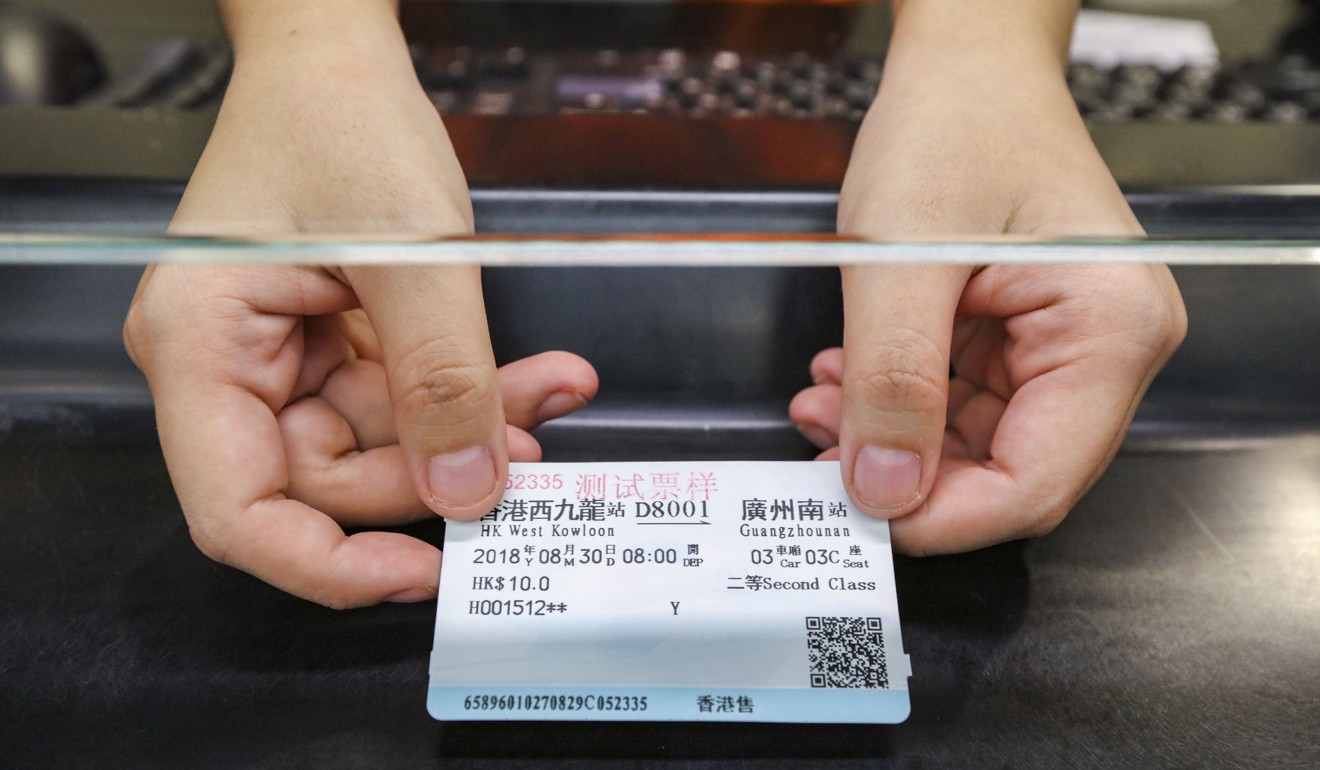
Do more to market mainland China express rail link to Hongkongers, MTR told
Lacklustre ticket sales in the city indicate Hongkongers are not as taken with the high-speed line as travellers from across the border
The city’s railway operator has been told to work harder to lure Hongkongers into using the new cross-border high-speed railway after ticket sales proved sluggish in the 10 days since sales began.
The number of seats sold in the city between September 10 and Wednesday stood at 25,035, according to the MTR Corporation.
The company said it had not yet obtained figures for tickets to Hong Kong snapped up in mainland China, about half of which are sold that side of the border.
However, a source said more than 70,000 tickets to the Hong Kong terminal had been bought on the mainland in the four days of presales up to last Thursday. That number paled in comparison to the 15,000 sold in Hong Kong in the same period.
The figures are a far cry from the rail giant’s forecast of 80,000 passengers a day for the HK$84.4 billion (US$10.76 billion) rail link, which connects Hong Kong with 44 destinations throughout the country via China’s 25,000km high-speed rail network.

On the first day of operations on Sunday, 95 return trains will run along the line. Journey time to Futian in Shenzhen is just 14 minutes. Trips to Shenzhen North will take between 19 and 24 minutes, depending on stops, and to Guangzhou South between 47 and 71 minutes.
Zhang Xiaoming, director of the Hong Kong and Macau Affairs Office, which represents the Chinese central government in the two cities, called on Hongkongers, especially youngsters, to venture out to the mainland more frequently via the express rail.
After 8 years in the making, the Guangzhou-Shenzhen-Hong Kong Express Rail Link will open. Here are the issues on its bumpy ride
“The opening of the high-speed railway will enhance quality of life for residents of the Guangdong-Hong Kong-Macau ‘Greater Bay Area’,” Zhang said. “I hope that for those Hong Kong compatriots who haven’t visited, especially youngsters, they will take an express train ride more often to come and take a look at the mainland, so they can gain a deeper understanding of the real situation as regards national development.”
A so-called co-location arrangement for Hong Kong’s West Kowloon station means national laws will be applied in a section of the terminal under the control of mainland officials. The area has been leased to the mainland to accommodate immigration and customs checks.
Zhang said the set-up would mean added convenience for travellers.
However, the legality of the arrangement has been challenged by opposition lawmakers in Hong Kong and the city’s Bar Association, which argued it breached the Basic Law, Hong Kong’s mini-constitution.
Quentin Cheng Hin-kei, a spokesman for concern group Public Transport Research Team, said the presales figures indicated the MTR Corp had overestimated patronage.
“Our latest internal assessment is that the express railway will only draw about 30,000 passengers a day. But it seems actual sales can’t even meet this pessimistic forecast,” he said.
Hungry? Hong Kong’s West Kowloon terminus for high-speed rail link has you covered
The railway would appeal much more to mainland visitors rather than Hongkongers, he added.
“It shows that this high-speed railway really favours the mainland’s development, but won’t do much to generate economic benefits for Hong Kong.”
Cheng believed the fares were uncompetitive and mainland stations on the outskirts of cities were a turn-off for Hong Kong passengers.
“For those living in the New Territories, it’s not convenient for them to take a high-speed train from West Kowloon,” he said.
“Also, for some stations such as Guangzhou South and Beijing West, it takes over one hour to reach the city centre.”
Cheng said the only way to attract more Hong Kong passengers would be to market the rail line at those wanting to reach so-called “second-tier” cities, such as Changsha, in Hunan province, and Chaoshan, in east Guangdong, which are not easily accessible by plane.
“So far many Hongkongers have felt pretty estranged from these second-tier mainland cities,” he said. “The MTR Corp should promote the charm of these places.”

